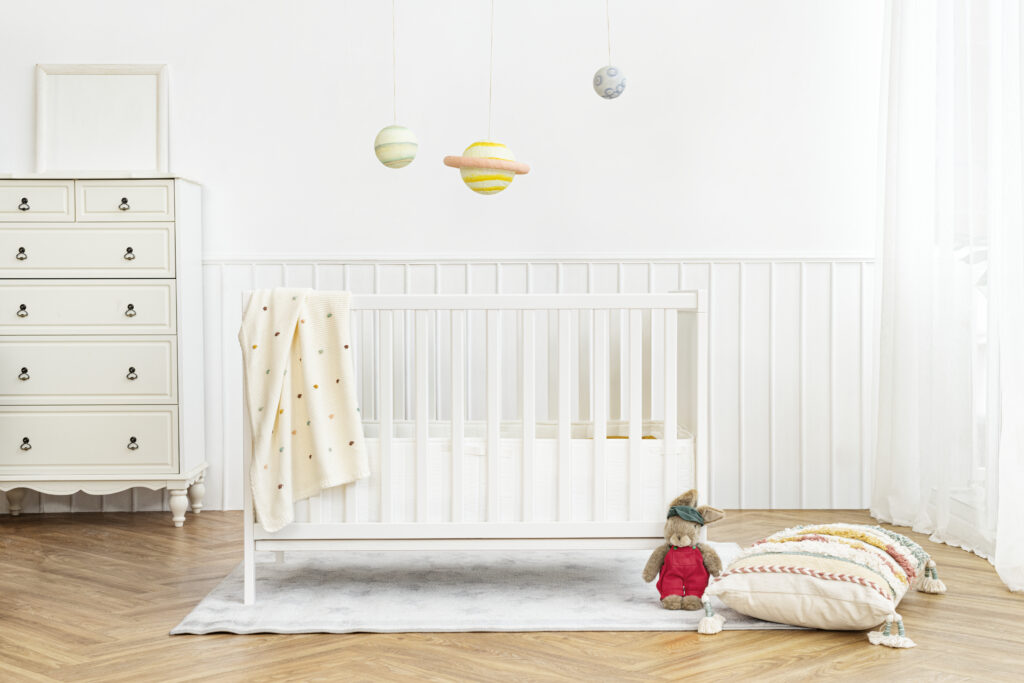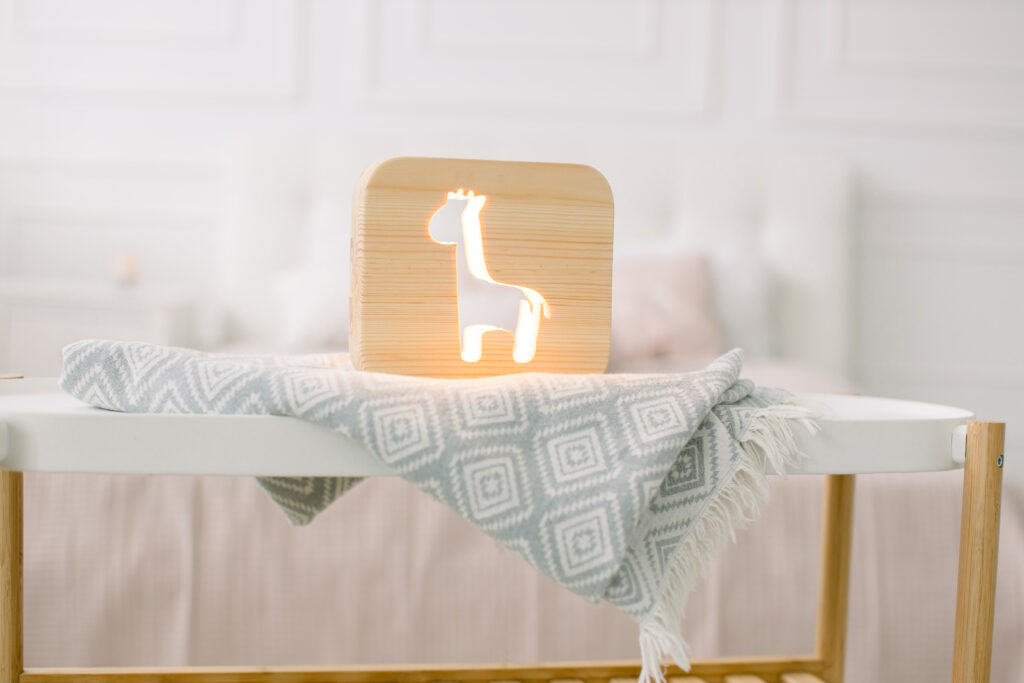Ensuring that the nursery is safe for your baby is one of the most important things to consider when designing and setting up the room. Here are some tips to help you create a safe and comfortable environment for your little one:
Start with the crib
The crib is the most important piece of furniture in the nursery, so it’s essential to make sure it is safe. The crib should meet current safety standards, with no loose or missing parts, and a tight-fitting mattress. Avoid any decorative embellishments that could be a choking hazard, and make sure the crib is placed away from windows, cords or other potential hazards.

Check the flooring
Check the flooring: The flooring in the nursery should be slip-resistant, and easy to clean. Carpet can be a tripping hazard and is not recommended as it can also hold onto allergens and bacteria. Hardwood or tile flooring is a safer option, and you can use rugs or mats for added comfort.

Keep it clutter-free
Keep it clutter-free: The nursery should be free of any potential hazards, such as electrical outlets within reach, sharp edges on furniture, or loose items that could be knocked over. Keep the room organized and clutter-free to ensure that your baby has a safe and comfortable environment to grow in.

Consider the paint
Consider the paint: The paint in the nursery should be low-VOC (volatile organic compounds) and free of any harmful chemicals. These types of paint are safer for babies, as they emit fewer harmful toxins into the air.
Use window coverings: It’s important to keep your baby’s sleeping area dark and quiet. Use window coverings to block out light and noise, and make sure that cords or other hazards are out of reach.

Install smoke and carbon monoxide detectors
It’s important to have smoke and carbon monoxide detectors installed in the nursery, as well as throughout your home. This will ensure that you are alerted in case of a fire or other emergency.

Keep a nightlight
Keep a nightlight on: A soft nightlight can be helpful for nighttime feedings and diaper changes, but make sure it’s not too bright and consider using LED light instead of traditional incandescent bulbs.

Check the room temperature
Keep the room at a comfortable temperature, between 68 and 72 degrees Fahrenheit. A baby’s room that is too hot or too cold can be uncomfortable and may increase the risk of Sudden Infant Death Syndrome (SIDS).

Use baby-proofing products
Use baby-proofing products: There are many baby-proofing products available on the market, such as outlet covers, cabinet locks, and door knob covers. These can help keep your baby safe and out of harm’s way.

Decide on a theme
Choosing a theme for the nursery can help you focus on what you need and avoid buying unnecessary items. A theme can also help you with your color and material choices, making it easier to stick to an eco-friendly option.
In conclusion, creating a safe and comfortable nursery for your baby is essential. Start by checking the crib and the flooring, and keep the room clutter-free. Consider the paint, use window coverings, install smoke and carbon monoxide detectors, use a nightlight, check the room temperature, and use baby-proofing products. Remember that safety should always be your top priority, and by following these tips, you can ensure that your baby’s nursery is a safe and comfortable environment for them to grow in.


